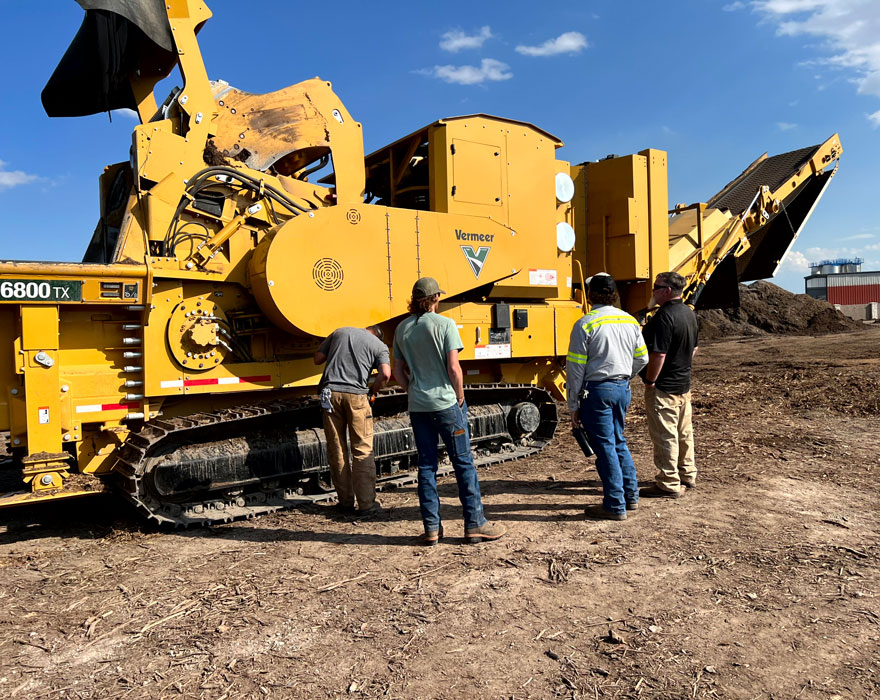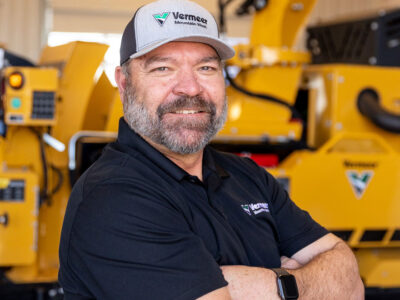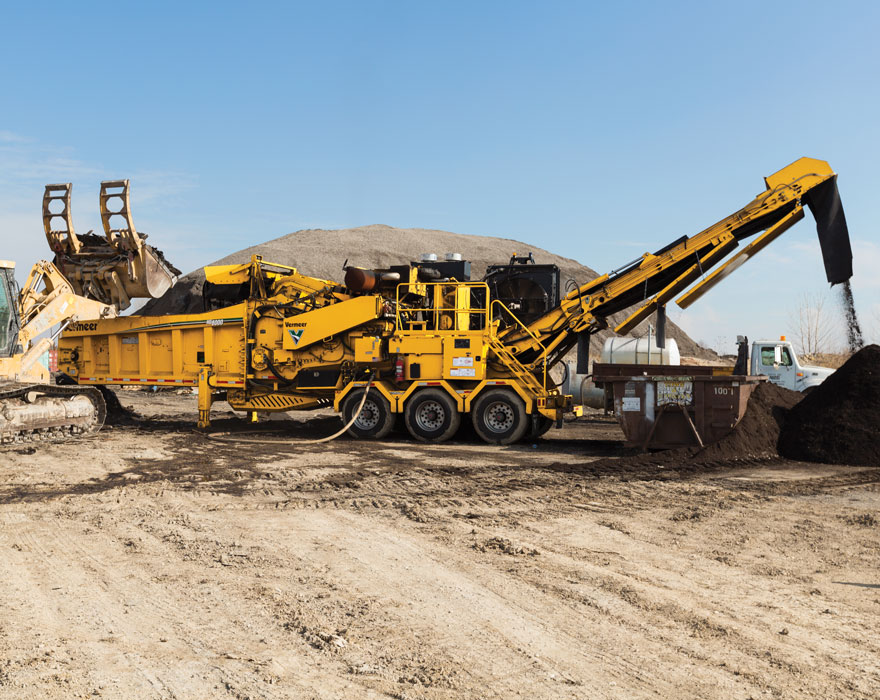If you are a waste recycler that has considered a horizontal grinder or tub grinder for your fleet but have reservations on the initial purchase price, this one’s for you. A grinder is a significant investment — there’s no doubt about it. But there are some best practices you can put in place to give you peace of mind, such as performing routine maintenance, adding a machine service coverage program at the time of purchase and creating a parts-stocking strategy. By instilling these best practices, you can aim to experience minimal unexpected machine costs while running a highly-productive grinder with extended longevity.
Looking beyond the sticker price
If you are evaluating grinder options, it is critical to look beyond the initial price of purchase and consider the long-term ownership and operation costs. When comparing the price of any product, there will inevitably be some that are more expensive and others that are cheaper. While it can be easy to select the cheapest option, it is crucial to assess future maintenance and repair expenses that may occur throughout the life of your machine.
Now, how can you evaluate future machine costs? The first step is to take a close look at the design components of the grinder. For example, Vermeer horizontal grinders and tub grinders were designed to make replacing parts simple — meaning less time and energy are spent working on the machine when you should be out grinding. Recycling and Forestry Sales Manager Ted Dirkx sees firsthand the concerns and challenges operators consider before purchasing a grinder. That’s why providing information on the intentional design elements on grinders, and how they will benefit operators in the long run is a high priority for his team. Dirkx said, “Innovative designs may mean a higher initial investment but can offer operators a better value over a 5,000-hour period. A component on Vermeer grinders that exemplifies this belief is the duplex drum. Making repairs and changing hammers an easier experience is a major benefit for operators.”
A key design decision made by the engineering team is to make replaceable wear surfaces within the machine, such as wear plates on the infeed, so when it comes time to make repairs you can replace those smaller parts and surfaces rather than replacing entire machine components. Replacing smaller machine parts, rather than larger components, is often less time consuming, less expensive and can help optimize overall machine performance.
Protecting your investment
Performing routine maintenance is necessary to help extend the life of your machine, but there are additional ways to protect the investment you made when purchasing a tub or horizontal grinder. Having a proactive and robust maintenance plan is key to maximize the life of your machine — and you can do that with the Vermeer Confidence Plus® asset protection program. This program lets you pay upfront for covered maintenance expenses and can be added to your initial purchase finance package or lease, or anytime within the standard one-year warranty period. Vermeer Confidence Plus program is beneficial for all Vermeer machines, but especially for those that tear through tough wood waste and may experience wear quicker than most. The premium program includes the first four service intervals performed by dealer-certified technicians, along with all associated filters and fluids, at no additional charge. Not only will service technicians perform standard maintenance intervals, but they will also do a multi-point inspection. By implementing a proactive approach of completing regular evaluations, unexpected machine issues can be resolved promptly.

According to Jeff Wartman, environmental sales specialist from Vermeer Mountain West, new and existing grinder owners benefit greatly from Vermeer Confidence Plus program in more ways than one. He explained, “A major pillar of Vermeer Confidence Plus program is to catch things early, rather than later. The check sheet allows the technicians to catch small things that can lead to preserving larger parts. Immediately customers may not see the benefit, but over time smaller things being recognized early will allow them to save on major repairs.” With the Vermeer Confidence Plus program, your machine is getting a consistent touchpoint with dealers and the service techs with an in-depth examination — not just your typical service. Wartman said, “Vermeer Confidence Plus program is a way to provide customers service as quickly as possible. Without it, we see customers — and their machines — less frequently. Being able to regularly check in on how the machine is functioning allows us to adjust and replace high-wear items as needed.”
Gil Alvarado is a regional lifecycle manager for Vermeer Mountain West. Part of his role is to empower service managers to train service technicians on clearly communicating with the operators regarding machine service and maintenance. Alvarado explained, “If an item is not covered by Vermeer Confidence Plus program, our service techs are having that conversation immediately. Our goal is to be upfront about what costs the customer will be facing, whether they have that additional service coverage or not.” Alvarado also noted that the service techs at Vermeer Mountain West do more than just fix the machine and move to the next machine or jobsite. They aim to equip operators with best practices and machine knowledge that may help them the next time they are running their grinder. “A sometimes-overlooked element to protecting a customer’s investment is to provide a level of operator training when we go out and fix a machine. When a service tech is working on a machine onsite, they will explain what may have caused the issue and how it can be prevented in the future.” In addition to specific machine tips and tricks, service techs can also show operators what they should be examining in their daily and weekly machine walkarounds between their scheduled maintenance appointments.
The right part, at the right time
Having a parts-stocking strategy in mind is another way to invest in your grinder and promote a productive and long machine life. Having the right parts at the right time can maximize your time on the jobsite and result in a smooth and productive experience. Some high-wear items that are beneficial to have on hand include: grinder tips, screens, wear plates, air and oil filters, and conveyor flashing.
Dirkx is a major advocate for implementing a robust maintenance plan at the time of purchase. “If you haven’t considered a parts stocking strategy, now is the time to start. The first step is looking at your records and evaluating what parts you went through in a 90-day period,” he explained. “After that, contact your dealer to get those parts and other high-wear items ordered and in hand.” For a parts stocking strategy that is tailored for you and your fleet, consulting your local dealer is key to identifying essential wear parts.
When reaching out to your local Vermeer dealer, ask them what common wear parts they typically have in stock for specific product lines. “The primary wear parts for grinders are the teeth and hammers,” explained Wartman. “At Vermeer Mountain West we’re intentional about keeping those stocked up for customers, but if we do need to order parts, we have been highly successful at obtaining them the next day.” Of course, the dealership won’t always have all the parts in stock. It helps to know what you can expect to be a quick refill, and what components may require a call to the factory. Those working in the manufacturing plants know that productivity is highly important to customers in the field and work hard to get parts out in a timely manner.
While you are consulting with your dealer on a parts-stocking strategy, spend some time with a Recycling and Forestry specialist to go over any questions or concerns you may have. Expertise from a Recycling and Forestry specialist can help align your equipment with the jobsite ahead to optimize your grinder’s performance.
Purchasing a grinder can be a long process with various competitive differences to consider. When you are evaluating the many grinder options available, don’t forget to consider the long-term expenses. Before you are at the point of purchase, determine a budget and what features are must-haves on your machine. Being mindful of the machine design and technology is just the beginning, and assessing the dynamic between the initial cost and future machine costs can help estimate your return on investment. Once you have the right machine for your crew, make a plan to implement the practices discussed above to keep your grinder running smoothly.
Dirkx said it best: “The better you maintain and take care of your grinder, the better your grinding experience will be through out the life of your machine.”
Vermeer Corporation reserves the right to make changes in product engineering, design and specifications; add improvements; or discontinue manufacturing or distribution at any time without notice or obligation. Equipment shown is for illustrative purposes only and may display optional accessories or components specific to their global region. Please contact your local Vermeer dealer for more information on machine specifications.
Vermeer, the Vermeer logo and Vermeer Confidence Plus are trademarks of Vermeer Manufacturing Company in the U.S. and/or other countries. © 2023 Vermeer Corporation. All Rights Reserved.

